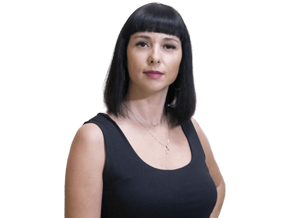Considering Spain’s housing price dynamics, the residential real estate sector remains one of the most profitable. According to the latest data from the Idealista portal, in June 2025 the average listing price reached €2,438/m², an all-time high.
Rents are also at record levels – €14.6/m² after almost 10% year-on-year growth. In major cities such as Madrid, Barcelona or Malaga, prices are even higher and growth is more pronounced.
Investing in real estate – whether buying to sell in a few years or to rent out – promises attractive returns, but it also involves risk. Before purchasing a property as an investment, consider the following factors and circumstances.
Location
Most real-estate experts and agents agree: location is one of the most important factors to keep in mind. Although areas with high demand tend to be expensive, they enjoy a steady audience and stable price growth – partly due to limited land for new construction. Prioritize areas with good amenities, transport, urban development prospects and without issues such as squatters or projects that could impact quality of life. For future rentals, assess the target tenant profile: families, students, professionals, or visitors on holiday. Each profile implies different housing needs.
Market research
Before buying property as an investment, carry out thorough market research in your chosen area. Knowing prices, historical trends and outlooks helps you decide whether you’re facing an opportunity or an overheated market. Use reliable sources or an experienced local agent who understands practical aspects that may affect the investment.
Choosing a mortgage
Most investors use bank financing, so the right mortgage is key to maximizing returns. Today, lenders offer fixed, variable and mixed rates. Analyse which rate structure best fits your goals. A fixed-rate mortgage offers long-term peace of mind; a variable rate may be advantageous if you expect rates to fall. Also factor in fees, required add-on products (insurance, etc.) and the loan term.
Tax check
Buying and selling housing in Spain involves several taxes – especially relevant for foreign investors. For new builds you must pay VAT (IVA): 21% for commercial premises, 10% for residential new builds and 4% for officially protected housing. VAT also applies to garages and storage rooms if not more than two spaces per dwelling. In addition, the Stamp Duty (AJD) applies, varying by autonomous community – usually 0.5%–1.5% of the purchase price. For resales there is no VAT, but you must pay the Property Transfer Tax (ITP), set by each community, typically 6%–11%. AJD may also apply. Add to these the transaction costs: notary and registry fees. Also consider ongoing housing costs: community fees, IBI (property tax) and waste collection, among others. Upon selling, capital gains are taxed via personal income tax (IRPF) if the sale price exceeds the purchase price – at 19%–28% depending on the gain. You may also pay the municipal “plusvalía” (increase in land value) based on cadastral value, holding period and a local coefficient.
Choosing the property type
The type of property you choose directly affects future returns. Each option has pros and risks. New builds require less maintenance at first, easing management and reducing costs. They usually offer better quality, energy efficiency and developer warranties. However, the price per m² is often higher and delivery may take months or years. Resale properties are usually cheaper and located in established areas where new development is limited. Many are ready to live in or rent out, but you must assess condition, as renovations may be needed and affect the budget. Fixer-uppers can offer strong value-add potential if the refurbishment is executed well: buy lower, improve, then sell or rent at a higher price. Consider costs, timeline, permits and contingencies.
Defining your strategy
Long-term rentals provide stable income with less day-to-day management. Tourist rentals can yield higher nightly returns but greater volatility, stricter rules and higher management costs.
Buy-renovate-sell can generate 20%–50% profit – or losses. Weigh all the points above before committing.
Expected returns and timelines
Run realistic calculations for gross and net yield. Gross yield = annual rent / purchase price × 100. Net yield is what matters: include all costs (mortgage, taxes, utilities, insurance, maintenance, vacancy, etc.). Define your horizon – renting for 10–15+ years or selling after renovation in 3–5 years. The shorter the horizon, the more critical it is to buy right and control costs. Avoid over-leveraging in case the market turns and a quick sale is needed. As with any investment, property carries risk. In recent years Spain’s government has intervened in the rental market, making evictions harder and supply tighter. If buying to rent, it’s advisable to take out rent-default insurance.



